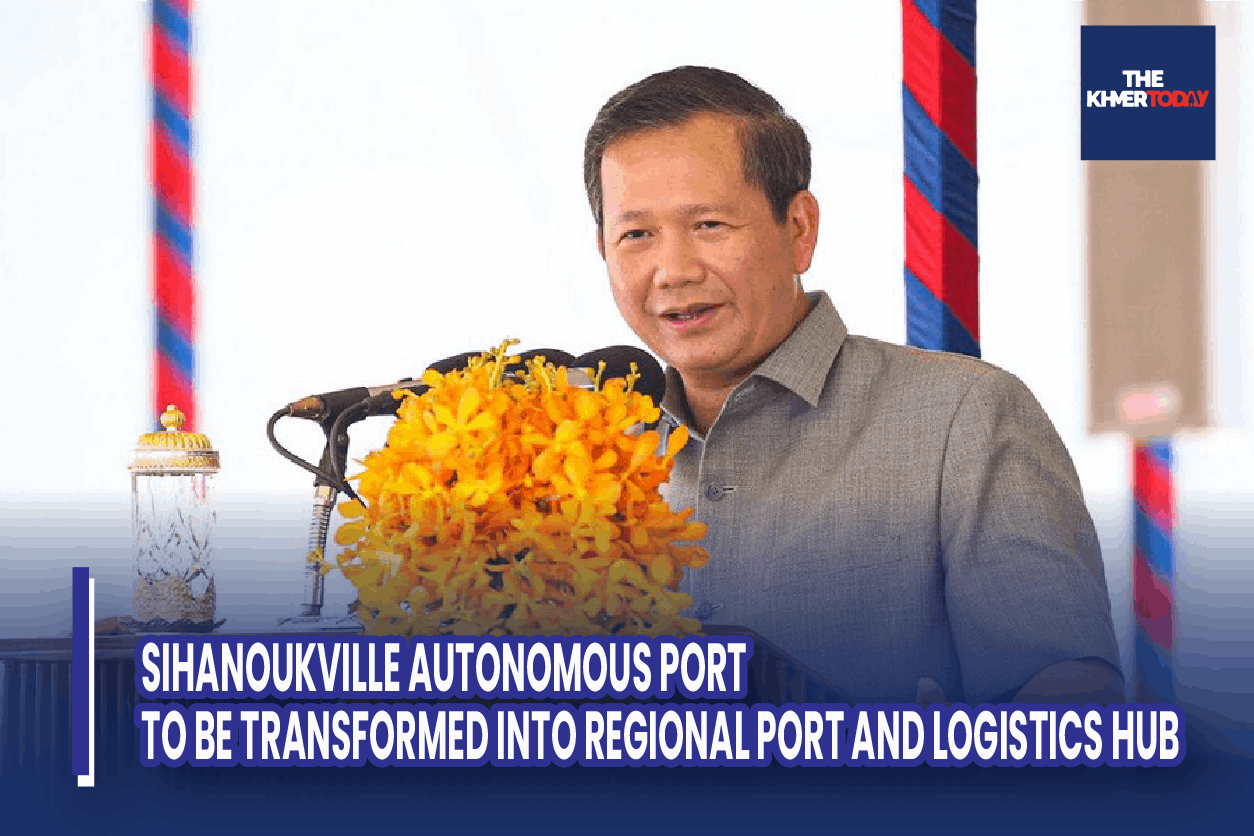Sihanoukville Autonomous Port To Be Transformed Into Regional Port And Logistics Hub

Phnom Penh, May 01, 2024 --
The Royal Government of Cambodia has an ambition to develop Sihanoukville Autonomous Port in Preah Sihanouk province into not only a deep seaport in Cambodia, but also a regional port and logistics hub by 2050.
The ambition was highlighted by Prime Minister Samdech Moha Borvor Thipadei Hun Manet at a get-together with civil servants, workers and employees at the Sihanoukville Autonomous Port this morning, on the occasion of the 138th anniversary of the International Labour Day (May 1) under the theme “One enterprise as One Peaceful Community”.
The Premier added that the port sector is one of the priority sectors to which the Royal Government pays attention by increasing investment funds and mobilising financing to further develop the port infrastructure.
Sihanoukville Autonomous Port is considered as a national economic gateway with character as a strategic entity in supporting international trade activities for economic growth in the past, at present and in the future, he said, stressing that this port not only increases revenue on the spot, but can also be a driving force for economic growth in Sihanoukville as well as the country’s whole coastal region.
According to H.E. Peng Ponea, Minister of Public Works and Transport, the Sihanoukville Autonomous Port plans to further expand its capacity through the construction project of a new deep container terminal-phase 2 of 400 metres long and 16.5 metres deep, and the phase 3 of 430 metres long and 17.5 metres deep, along with supporting modern technical equipment.
The phase 1 began in December 2023 under the presidency of Prime Minister Samdech Moha Borvor Thipadei Hun Manet and H.E. Ishibashi Rintaro, Parliamentary Vice Minister of Land, Infrastructure, Transport and Tourism of Japan.
The construction project of the 350-metre-long-and-14.5-metres-deep container terminal-phase 1 will last 36 months and cost some US$243 million, an ODA loan from the Government of Japan.
Once in operation, the new container terminal-phase 1 will be able to handle 93 percent of regional vessels, up from the current 18 percent, while the costs of sea freight will be reduced by US$200 per TEU, a similar cost to that of other countries in the region.
.png)
.jpg)